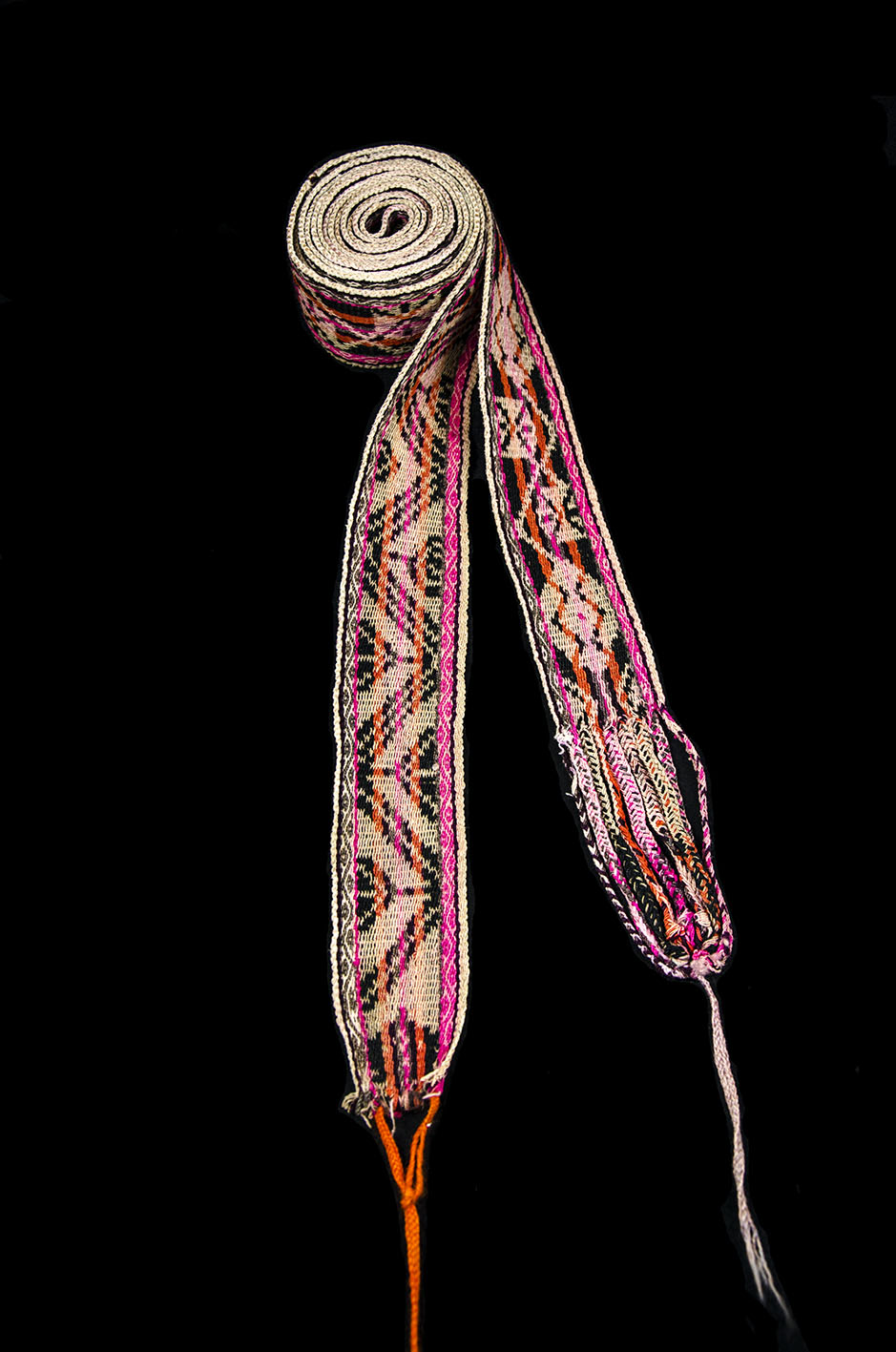BACK TO TOP
TEXTILES
Cotogaita Belt. Quechua ethnic group from Potosí. Mid 20th century.
Girdle woven on a stake loom, warp face, with an ornamental design of double-sided working. Its material is sheep's wool spun and twisted with a spindle; dyed with cochineal graine and other natural colorants. Measures. Length: 330 cm / 129.92 in. Width: 6 cm / 2.36 in.
This piece is a complete sample of a craft that was already developed in Santiago de Cotagaita more than two centuries ago; In the weaving, their designs were preserved -mistura of Quechua tradition with baroque details-, their ancestral dyeing techniques and their primitive looms, from which these textile marvels arise, thanks to the knowledge inherited by their weavers.
It comes from Cotagaita, a name with dark memories for Argentine history, since on October 27, 1810 the first confrontation between the Auxiliary Army of Peru (known as the Army of the North) and the Royal Army of Peru took place in that town. “The king's vanguard, which was in Tupiza, withdrew to Cotagaita, taking refuge in an entrenched enclosure. It was this point that seemed strategic par excellence to close the entrance to Peru to the Argentine forces (...)”. (1)
Upon arriving in Cotagaita, Antonio González Balcarce, in command of the patriotic troops, invited the royalist general José de Córdoba y Rojas to recognize the Provisional Government Board of the Provinces of the Río de la Plata, and before his refusal, he urged him to surrender, order that was dismissed outright, initiating a combat that lasted almost four hours. In the end, Balcarce not only failed in his attempt to take enemy positions by storm, but also had to order a withdrawal that, if it did not end in disaster, was due to the enemy's little interest in pursuing them. The truth is that the defeat of Cotagaita was hidden by the victory obtained shortly after in Suipacha and in the war parties it was minimized as a “false attack”.
Note:
1. Bernardo Frías: Historia del General Martín Güemes y de la Historia de Salta. Salta, Ed. Eucasa, 2017, p. 91.
Are you interested in selling some works?
Send us an email briefly indicating
which works you intend to put on sale, and we will respond. click here
Subscribe to our newsletter to be updated.
Check our Newsletters